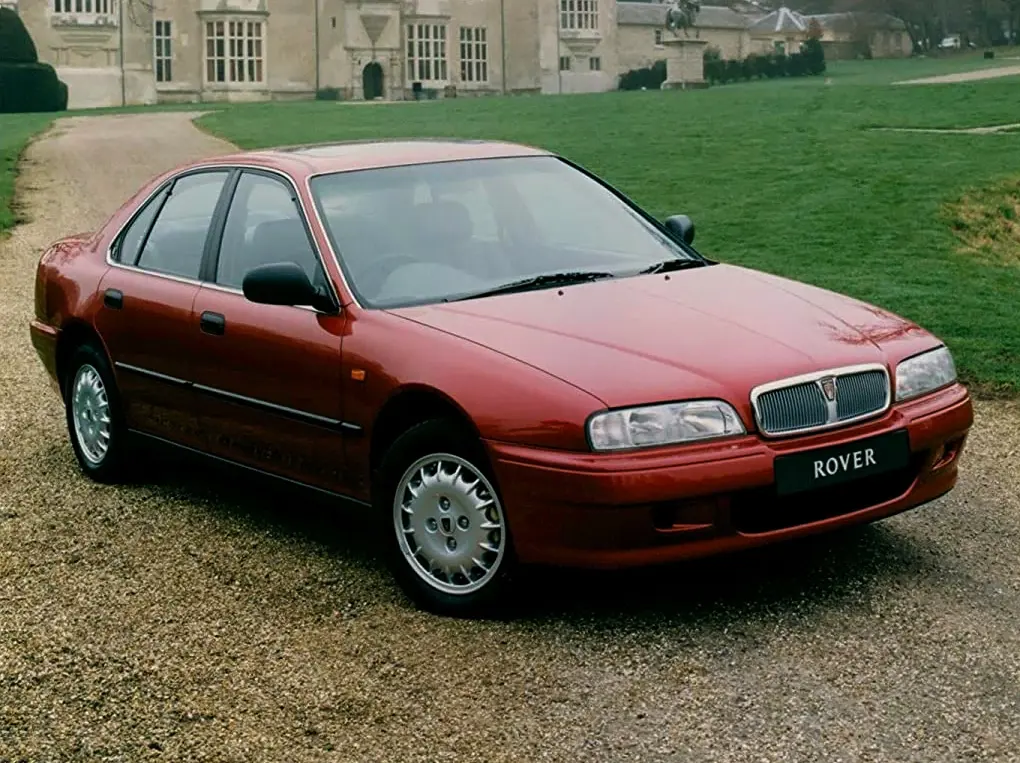30 YEARS OF THE ROVER 600
08 March 2023
When realising the Rover 600 will be celebrating its 30th birthday on 7 April, two thoughts come to mind. Firstly, this writer feels completely antique as he recalls the Top Gear report with a young Mr. J. Clarkson -
Secondly, it is a car that deserves far more coverage in the classic press. The 600 was a crucial vehicle for Rover – a model that bridged the transition from the Honda to the BMW eras. It was also one of the best cars in its particular market sector.
When Rover launched the 600, it replaced the upper echelons of the Montego range with advertisements targeting the lower rungs of the Audi/BMW market sector. On 4 December 1993, Eric Bailey wrote in The Daily Telegraph: “But isn’t it a Honda underneath? A Honda Accord then? Yes – it is made in Swindon and you don’t get much more British than that. But the sad truth is that most people don’t buy cars because they are British any more.”
The 600 was indeed a Longbridge interpretation of the fifth-generation Honda Accord. However, Keith Adams and David Morgan point out in https://www.aronline.co.uk/ - that Rover had no involvement with the technical development and could only make changes to the exterior design. Furthermore, they could use only Honda’s petrol engines and not export the 600 to the USA.

But the result looked different to the Accord; the 600 retained only the Honda’s front doors, roof panel and lower section of the rear doors. The company’s design chief Gordon Sked employed the ‘distance distinction’ technique by making the Rover stand out from its rivals via such detailing as the P4/P5 inspired grille.
The six-car line-up extended from the 620i to the flagship 623GSi, powered by Honda’s 2,259cc twin-cam unit. Meanwhile, the colour changes ranged from Black, British Racing Green and Caribbean Blue to White Diamond and the uber-1990s Nightfire Red. Sue Baker, reporting for The Observer, appeared highly impressed: “I relished their verve and fluidity. The cars have light, precise steering, tidy cornering manners and a smooth gear-change, plus a comfortable interior and ride. The only obvious flaw was the tyre roar on some versions.”
The May 1993 edition of the never-easily-impressed Car magazine evaluated the 620SLi opposite the BMW 318i, the Citroen Xantia 2.0 and the Ford Mondeo 2.0 GLX in a test headlined ‘Rover bites back’. Roger Bell’s report concluded: “Assemble these four cars for appraisal by an unprejudiced public and the Rover would win hands down. No question. It is a winner. If we’re talking class – and that’s what the upper echelons of the M2 sector are all about - the 620SLi exudes it.
Mr. Bell also thought the Rover scored handsomely “for comfort, refinement, quietness and build quality. Above all, it imbues the driver with a sense of it’s good-to-be-here well-being that its rivals cannot match. It has style, it has image, it has class”.
July 1994 saw the debut of the 620ti, powered by a 2-litre 16-valve turbocharged twin-cam engine capable of 143 mph. For £19,995, you gained a car that would be the envy of all Gareth Cheeseman-alike sales executives, with its six-spoke alloy wheels. More importantly, it boasted uprated suspension, with a torque sensing differential and a five-speed manual gearbox with close ratios.
Mr. Bell writing in The Independent, described the 620ti as “the latest and best progeny of its relationship with Honda. It is so good that it threatens the celebrated 325i produced by Rover’s new masters.” The ti was also nearly £4,000 cheaper than the 3-Series, and “At an effortless 100mph on the Millbrook test track, it still had plenty of reserves of overtaking power”.
The last of 273,221 600s left Cowley in January of 1999, three months after Rover introduced the 75. The surviving examples are now widely regarded as some of the best cars of their class. And as for the 620Ti, The Independent said: “Imagine a Ford Sierra Cosworth in Sunday-best flannels, and you’ve got its measure”. Who could possibly ask for more in a 1990s Rover?
